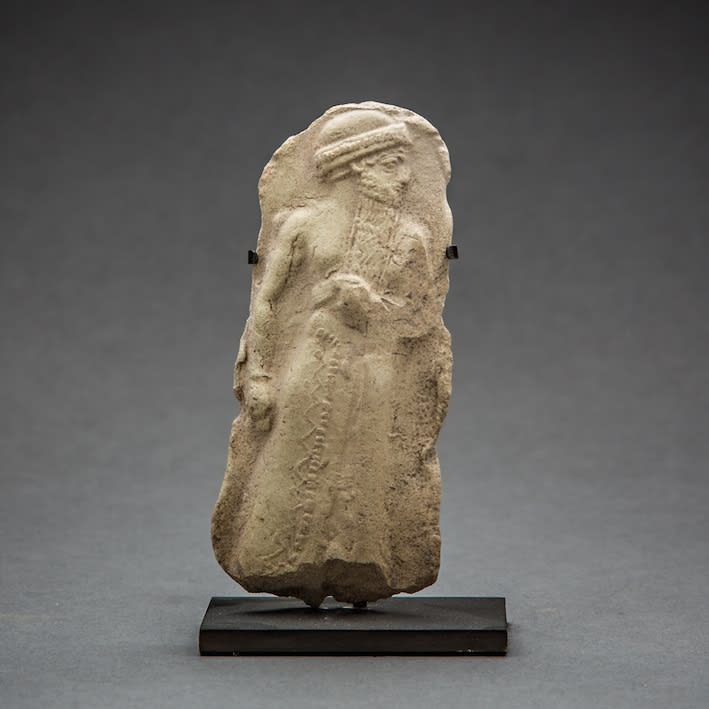Old Babylonian Moulded Plaque, 2000 BCE - 1700 BCE
Terracotta
11.5 x 5.1 cm
4 1/2 x 2 in
4 1/2 x 2 in
LO.1218
The Old Babylonian period describes south Mesopotamia in the period about 2000-1600 BC. The early years saw a number of important states dominating the region: Isin, Larsa, Eshnunna and, from...
The Old Babylonian period describes south Mesopotamia in the period about 2000-1600 BC. The early years saw a number of important states dominating the region: Isin, Larsa, Eshnunna and, from 1894 BC, Babylon. Babylon was ruled by a dynasty of Amorite kings. The sixth ruler was Hammurapi, who defeated the other southern states and expanded his control into north Mesopotamia. On the death of Hammurapi the empire gradually shrank over about 150 years. Nonetheless, Babylon remained an important power until it was sacked by the Hittite king, Mursili I, in about 1595 BC. During the Old Babylonian period literary activity flourished with scribes composing and recording religious, poetic and 'scientific' works in Sumerian and Akkadian cuneiform. Perhaps the most famous monument is the stele of Hammurapi, now in the Musée du Louvre, Paris.
Ceramic plaques of this sort were mass-produced from moulds and represent a form of art available to a wide audience. The casting of plaques was a simple and inexpensive way to produce relief images, since numerous plaques could be made from a single mold. They have been excavated in temples as well as household shrines in private homes. Their subject matter varies widely, including religious images, mythological and erotic scenes, and representations of rulers and gods.
The long-bearded figure on this plaque carries a mace or scepter and wears a long vest and the round headdress of an Old Babylonian/Isin-Larsa ruler. His posture is erect and commanding, resembling that of Mesopotamian rulers of the Akkadian period on monumental relief sculpture. The mace held by this figure is often interpreted as a symbol of authority that has been invested by a higher power. Similar figures appear on cylinder seals, where they are usually depicted facing a suppliant goddess who intercedes with the gods on behalf of the seal owner. it is likely that this figure represents a king in ceremonial dress.
Ceramic plaques of this sort were mass-produced from moulds and represent a form of art available to a wide audience. The casting of plaques was a simple and inexpensive way to produce relief images, since numerous plaques could be made from a single mold. They have been excavated in temples as well as household shrines in private homes. Their subject matter varies widely, including religious images, mythological and erotic scenes, and representations of rulers and gods.
The long-bearded figure on this plaque carries a mace or scepter and wears a long vest and the round headdress of an Old Babylonian/Isin-Larsa ruler. His posture is erect and commanding, resembling that of Mesopotamian rulers of the Akkadian period on monumental relief sculpture. The mace held by this figure is often interpreted as a symbol of authority that has been invested by a higher power. Similar figures appear on cylinder seals, where they are usually depicted facing a suppliant goddess who intercedes with the gods on behalf of the seal owner. it is likely that this figure represents a king in ceremonial dress.



